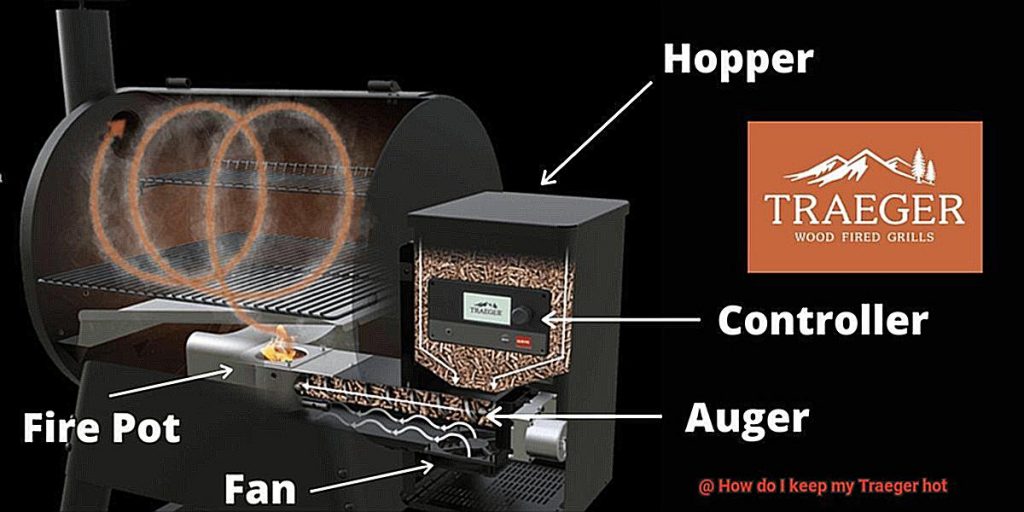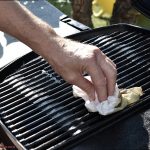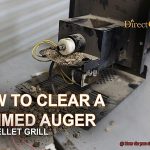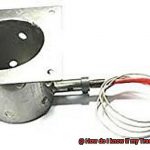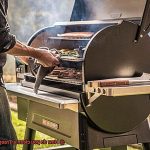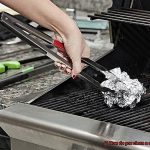Do you dread the thought of serving up undercooked or overcooked meat from your Traeger grill? Are you on a quest to discover how to keep your Traeger hot and achieve consistent grilling results? Well, look no further. You’re in the right place.
The key to achieving perfectly grilled meat every time is maintaining a constant high temperature on your Traeger grill. This ensures that your meat is cooked to perfection with just the right amount of smokiness, juiciness, and flavor.
In this article, we’ll explore some tried-and-true tips and tricks for keeping your Traeger hot and getting the most out of your grill. We’ll cover everything from selecting the perfect wood pellets to preheating your grill like a pro. Plus, we’ll share some insider secrets about using foil and water pans to regulate temperature and moisture.
Whether you’re an experienced grilling master or just starting out, there’s something here for everyone. So kick back, grab yourself a cold drink, and get ready to take your outdoor cooking game to new heights with these essential tips on how to keep your Traeger hot.
Contents
What is a Traeger?
Founded in 1984 by Joe Traeger, this company has been producing top-notch grills that use wood pellets instead of traditional charcoal or gas. Traeger grills are widely popular among BBQ enthusiasts and are known for their convenience, versatility, and consistent performance.
One of the unique features of Traeger grills is their use of wood pellets, which gives your food a distinct flavor and aroma that you won’t find with other grills. But how do you keep your Traeger hot and cooking perfectly every time? Here are some tips to consider:
- Keep an eye on the hopper – Before starting your cook, make sure you have enough fuel in the hopper. Always check the hopper before starting your cook and keep a bag of pellets on hand to top it off as needed.
- Monitor the temperature – The digital controller on your Traeger allows you to set the temperature and maintain it throughout the cook. However, it’s important to keep an eye on the temperature gauge to make sure it stays where you want it. If you notice the temperature dropping, adjust the settings or add more pellets to the hopper.
- Keep your Traeger clean – A build-up of grease and ash can interfere with the airflow and cause your grill to lose heat. Make sure to clean out the firepot and ash pan regularly, and scrape any excess grease from the grates after each use.
- Consider using accessories – Accessories like thermal blankets or insulated covers can help retain heat and keep your Traeger hot, especially in colder weather or windy conditions.
But what makes Traeger grills so special? One of their most unique features is their versatility – they can be used for a variety of cooking techniques, including smoking, grilling, roasting, and baking. This makes them a popular choice for outdoor cooking enthusiasts who want to experiment with different methods of preparing food.
Ensuring Enough Fuel in the Hopper
And to achieve this, ensuring that there’s enough fuel in the hopper is crucial. As an expert on this topic, I’ve compiled some tips to help you ensure that your grill is always ready to go when you are.
First and foremost, check the hopper level before you start cooking. Different Traeger models have varying hopper capacities, so make sure you fill it with enough pellets for your cooking session. Keep in mind that some recipes may require more pellets than others, so plan accordingly.
But don’t just fill the hopper with any wood pellets. Using high-quality wood pellets is essential. Cheap pellets may produce more ash and impurities, which can cause inconsistent temperatures and impact the flavor of your food. Instead, stick to pellets made specifically for pellet grills to ensure clean and consistent burns.
Once you’ve filled up the hopper with quality pellets, avoid opening the lid unnecessarily during cooking. Every time you do this, you let out heat and smoke, which can affect the temperature and flavor of your food. Consider using a hopper extension or refill the hopper when necessary to avoid opening the lid.
In addition to these tips, keeping your grill clean is vital. Regularly cleaning out the firepot and ash pan helps ensure that air flows freely and prevents any blockages that could cause temperature fluctuations.
Finally, consider using accessories like thermal blankets or insulated covers to help retain heat and maintain temperatures during colder months.
Monitoring Temperature with the Digital Controller
Luckily, with the Traeger grills’ digital controller, this task has never been easier. Let’s explore how this tool simplifies the process of maintaining consistent temperatures and ensuring your food is cooked to perfection.
The digital controller on Traeger grills is a game-changer. It displays the current temperature and allows you to set your desired temperature for your grill, ensuring that your meats are cooked to perfection every time. Additionally, the controller comes with a probe that can be inserted into your food to monitor its internal temperature, providing you with accurate readings and taking the guesswork out of cooking.
One of the best features of the digital controller is its ability to maintain consistent temperatures. Once you’ve set your desired temperature, the controller will work tirelessly to keep it steady throughout the cooking process. There’s no need to constantly adjust vents or worry about when it’s time to add more pellets – the digital controller has got you covered.
If you do notice a fluctuation in temperature, adjusting it is easy with the digital controller. Simply make any necessary adjustments, and your grill will be back on track in no time. You can also periodically check the pellets in the hopper to ensure they are feeding into the fire pot correctly, further ensuring that your Traeger stays hot.
In conclusion, Traeger grills with digital controllers make monitoring and maintaining temperature a breeze. With this tool at your disposal, you can confidently cook up delicious meals on your Traeger without worrying about fluctuating temperatures. So sit back, relax, and let your digital controller do all the hard work for you. Happy grilling. And remember to keep an eye on these sub-topics while using your digital controller:
Keeping Your Traeger Clean
A well-maintained Traeger not only guarantees delicious food but also prevents potential hazards such as grease fires.
Let’s start by discussing the grates. These workhorses experience a lot of wear and tear, so it’s essential to keep them clean for optimal cooking performance. Use a grill brush or scraper to remove any leftover food or debris. After each use, give them a thorough cleaning with warm, soapy water to eliminate any stubborn grime.
Next up is the grease bucket. It’s where all the excess grease goes, and if not emptied regularly, can cause serious problems. To prevent grease buildup that could potentially hinder the heating process, empty and wipe down the interior of your Traeger frequently.
Let’s move on to the fan blades. These unsung heroes are responsible for keeping the air flowing and ensuring consistent heating throughout your grill. Over time, they can become caked with dust and grime, leading to inconsistent heating. So it’s important to inspect and clean these blades regularly with a damp cloth or brush to keep them functioning correctly.
Lastly, don’t forget about the exterior of your Traeger. A tidy exterior not only looks great but also ensures that any vents or other components aren’t obstructed. So give it a good scrub down with warm water and soap or use a specialized grill cleaner.
Using Accessories to Retain Heat
Fear not, for using accessories to retain heat is a game-changer. As an expert on this topic, I have gathered some research notes to help you understand how different accessories can enhance your grilling experience and keep the heat in.
Let’s start with the most common accessory – the grill cover. Not only does it protect your grill from external factors like wind and rain, but it also acts as a shield to trap the heat inside. This means that you can maintain a high temperature for more extended periods, resulting in flawlessly cooked meals every time.
Another accessory that can help retain heat is a heat shield. Placed between the fire pot and the cooking grates, it helps distribute the heat evenly across the cooking surface. This prevents hot spots and ensures that the temperature stays consistent throughout your cooking process, resulting in perfectly cooked meals.
In colder climates, a thermal blanket is an excellent investment. Made of heat-resistant materials, it wraps around your grill and traps in the heat, preventing it from escaping through the walls of the grill. This ensures that your grill stays hot even when the temperature outside drops, allowing you to enjoy your outdoor grilling experience all year round.
Lastly, using a smoke stack extension can also help retain heat by allowing hot air to circulate more effectively and preventing it from escaping too quickly. This results in a higher internal temperature and more consistent cooking results.
Checking for Airflow Issues
Before you do, take a moment to check for potential airflow issues that could lead to inconsistent temperatures and an unsatisfactory grilling experience.
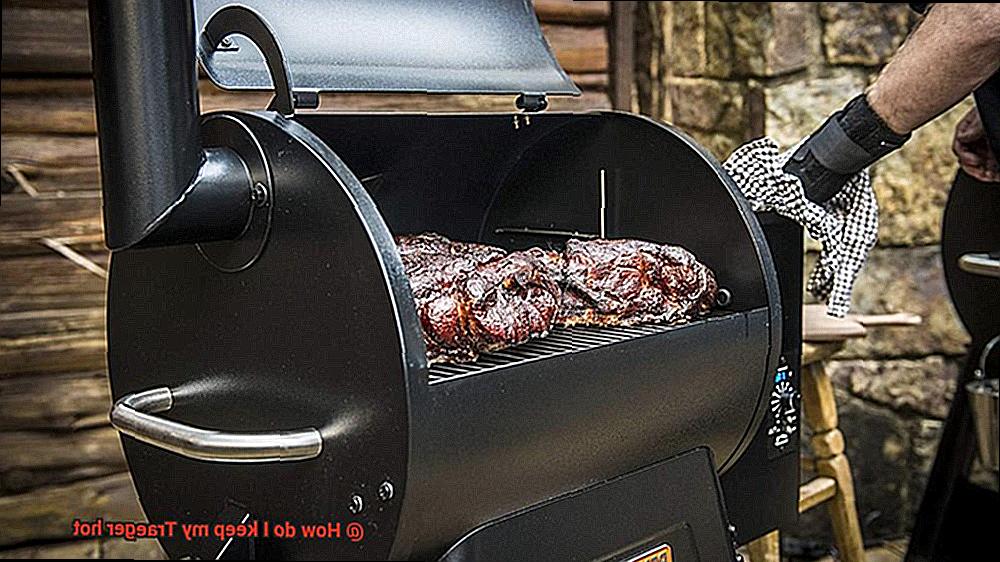
First, inspect your grill grates and make sure they are clean and free of debris. Any obstructions can impede proper airflow and make it harder to maintain consistent temperatures. Don’t forget to check the chimney as well, ensuring it’s clear of any buildup or debris that could obstruct smoke flow.
Next, listen for the soft humming sound of your Traeger’s fan. The fan plays a crucial role in circulating air throughout the grill, so any issues with its operation can cause poor airflow. If you don’t hear anything or notice any issues with the fan’s operation, you may have an airflow problem on your hands.
Another potential culprit for poor airflow is a faulty auger motor. This motor feeds pellets into the firepot and ensures consistent heat levels. Listen for any abnormal sounds coming from the motor when you turn on the grill to test for issues.
Finally, don’t forget about your drip tray. Excessive grease buildup can cause airflow issues and even flare-ups during cooking. Clean it out regularly to prevent potential fire hazards.
Replacing Parts as Necessary
Before you get started, let’s talk about the importance of replacing parts as necessary to keep your grill performing at its best.
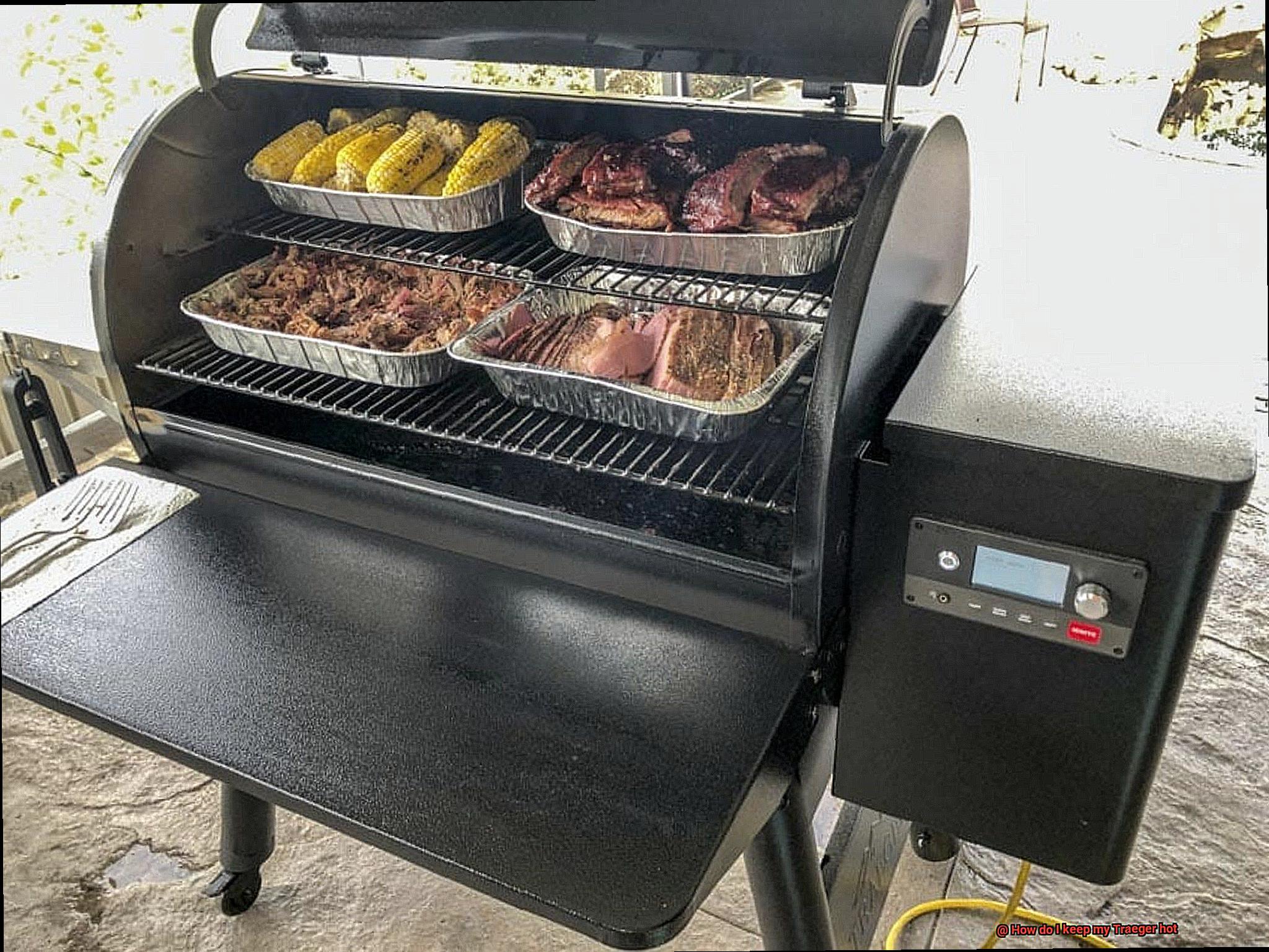
First and foremost, the heating element and temperature controller are the two most critical parts of your grill. If either of these components is not functioning correctly, your grill may not heat up enough or maintain a consistent temperature, leading to unevenly cooked food. Luckily, replacing these parts is a relatively simple task that can be done with basic tools.
Aside from these crucial components, other parts such as grill grates, drip trays, and grease buckets can also wear out over time. These parts play an important role in the performance of your grill and can affect the taste and quality of your food. By regularly inspecting these parts and replacing them as needed, you’ll ensure that your grill remains in tip-top shape for all your grilling needs.
Now, I know what you’re thinking – replacing parts can be complicated and expensive. But fear not. Replacing the heating element is a straightforward process that requires minimal effort. And while replacing the temperature controller may be a bit more complex, most DIY enthusiasts can tackle this task with ease.
Taking Care of Your Pellets
If yes, then you know that taking care of your pellets is essential in keeping your grill hot and performing at its best. These compressed sawdust and wood shavings are the fuel source for your grill, and ensuring they’re in good condition is crucial for an excellent grilling experience. Here are some tips on how to take care of your pellets:
- Proper Storage: Moisture is the enemy of pellets, causing them to expand and break down, rendering them unusable. Store your pellets in a cool, dry place away from moisture and direct sunlight.
- Inspection: Before using your pellets, inspect them for any discoloration or musty smell. This indicates that they are no longer suitable for use and need replacing. Also, use high-quality pellets designed for use in pellet grills like Traeger.
- Fill up the hopper completely: A full hopper ensures that your grill has a steady supply of fuel and stays hot. Keep it filled up when loading your pellets.
- Regular cleaning of the hopper: Accumulated debris or dust can cause problems with your grill’s performance. Regularly clean out the hopper by removing any debris or dust that may have accumulated.
- Proper Shutdown: After cooking, let the Traeger run on high for at least 10-15 minutes to burn off any remaining pellets in the firepot. Then, turn the temperature dial to “off” and unplug the grill. This prevents any remaining pellets from smoldering and causing problems with your grill’s performance the next time you use it.
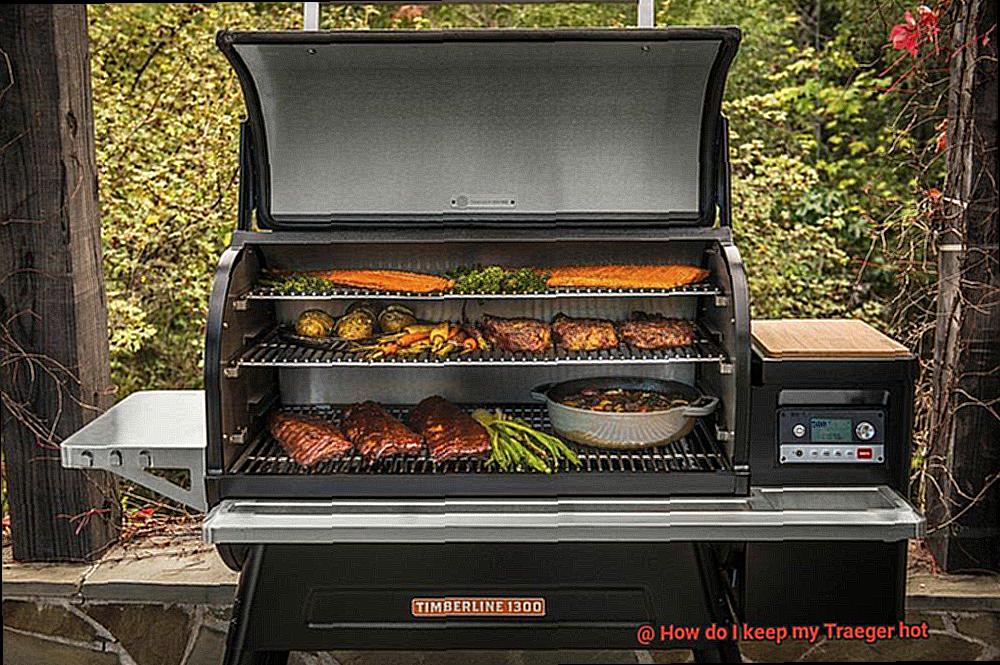
L3o4Lo3OPNg” >
Conclusion
In conclusion, maintaining a consistent and hot temperature on your Traeger grill is the key to achieving perfectly grilled meat every time. To ensure that your grill stays hot, there are several tips and tricks you can use to get the most out of your grilling experience.
Firstly, selecting high-quality wood pellets is essential in keeping your grill hot. The type of wood pellet you choose will affect the flavor of your food as well as the heat output of your grill. Preheating your grill like a pro is also crucial in ensuring that it reaches and maintains the desired temperature.
Accessories such as thermal blankets or insulated covers can help retain heat and prevent temperature fluctuations. Regularly cleaning out the firepot and ash pan can also prevent blockages that could cause temperature irregularities.
Monitoring the temperature with the digital controller is crucial in maintaining consistent temperatures and ensuring that your food is cooked to perfection. The controller comes with a probe that can be inserted into your food to monitor its internal temperature, providing accurate readings and taking the guesswork out of cooking.
Replacing parts as necessary is also important in keeping your grill performing at its best. From inspecting grill grates, drip trays, and grease buckets to replacing heating elements, regular maintenance ensures that your grill remains in tip-top shape for all your grilling needs.
Lastly, proper storage, inspection, filling up the hopper completely, regular cleaning of the hopper, and proper shutdown are all essential steps in taking care of your pellets.

